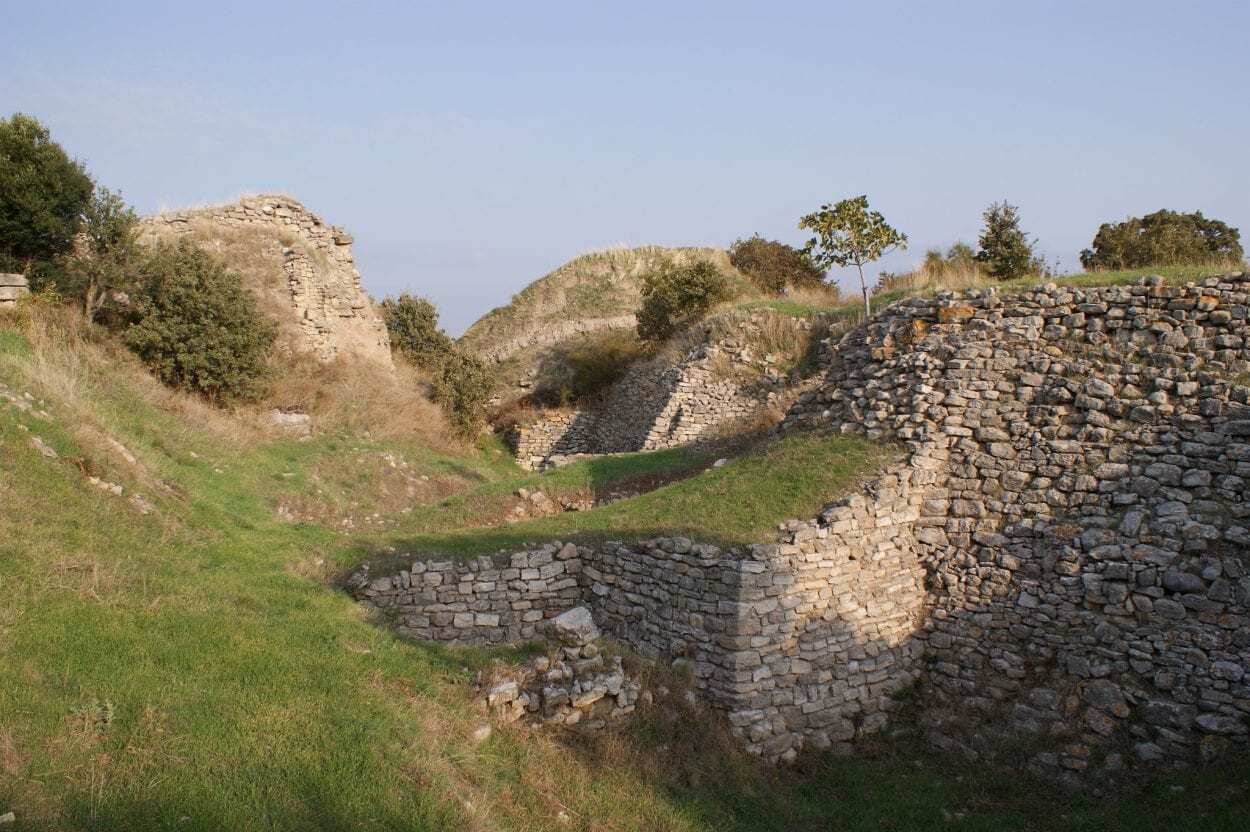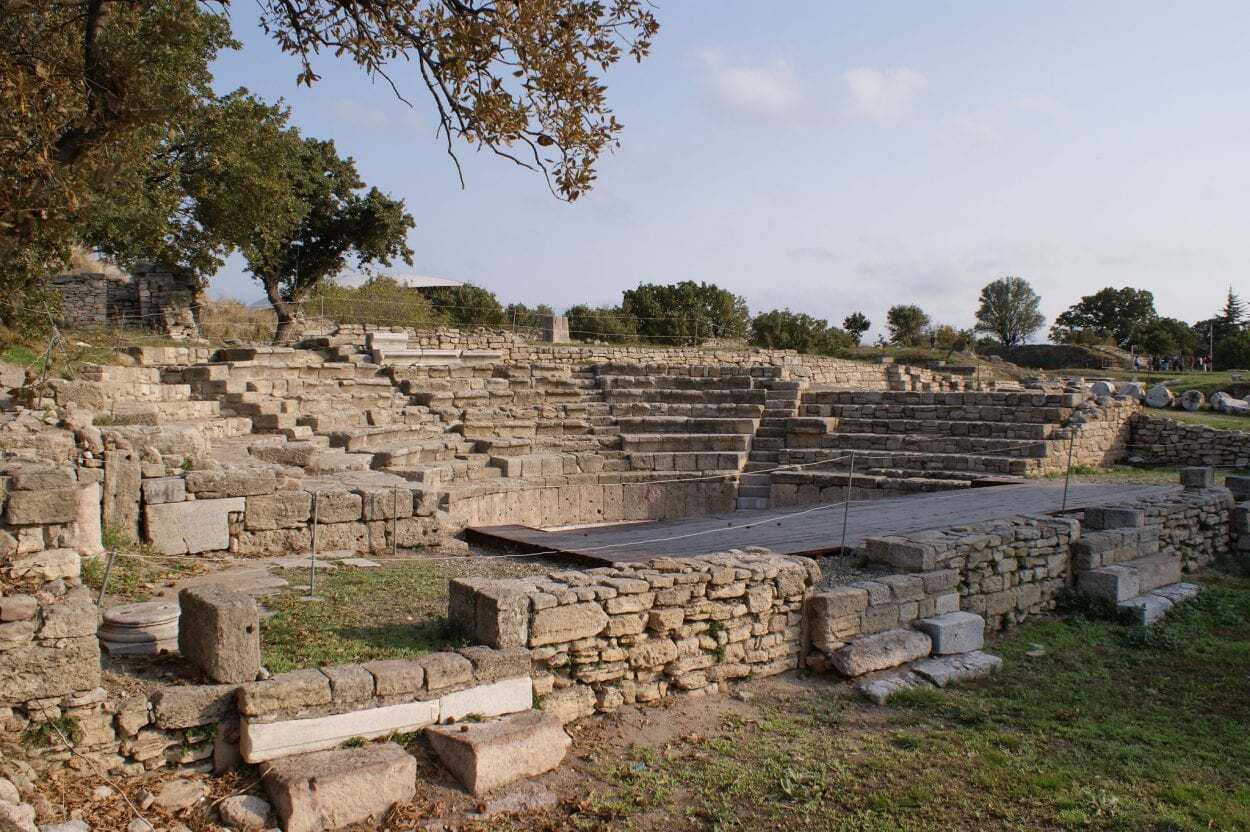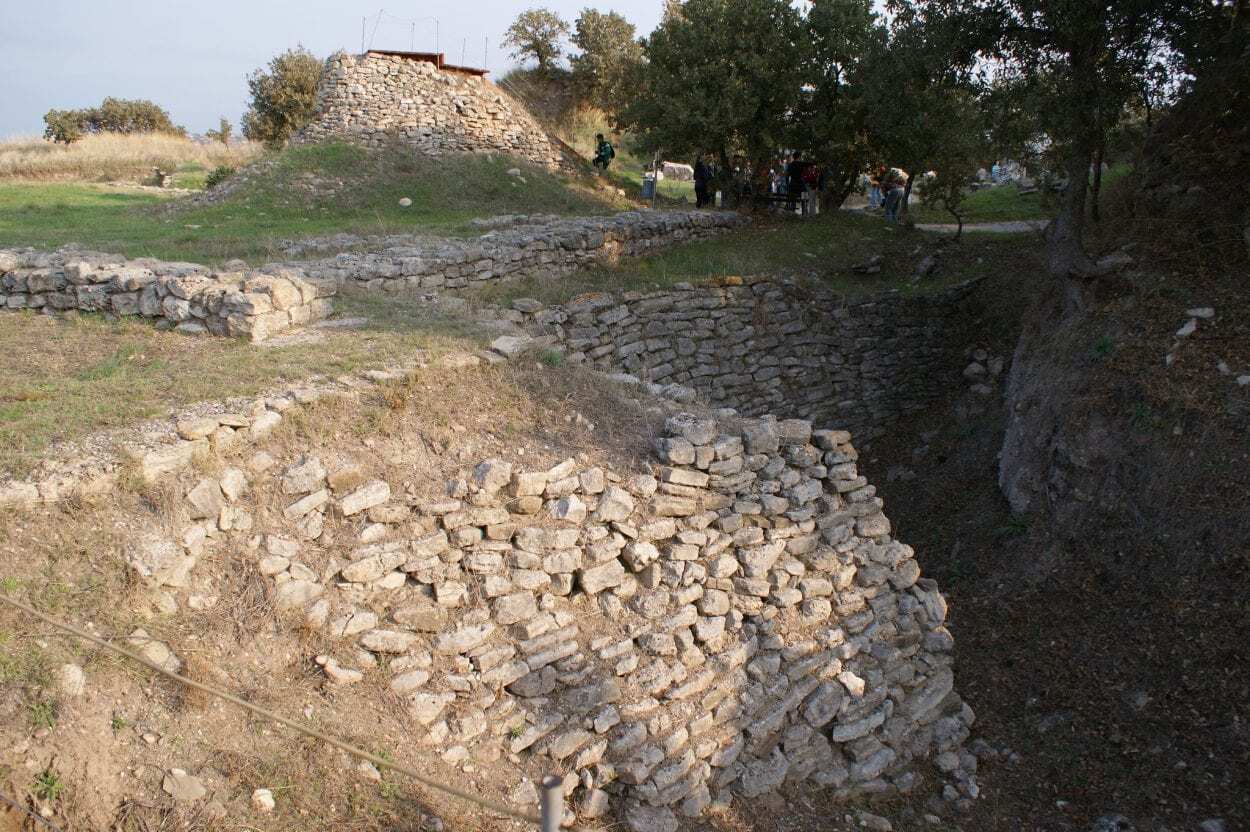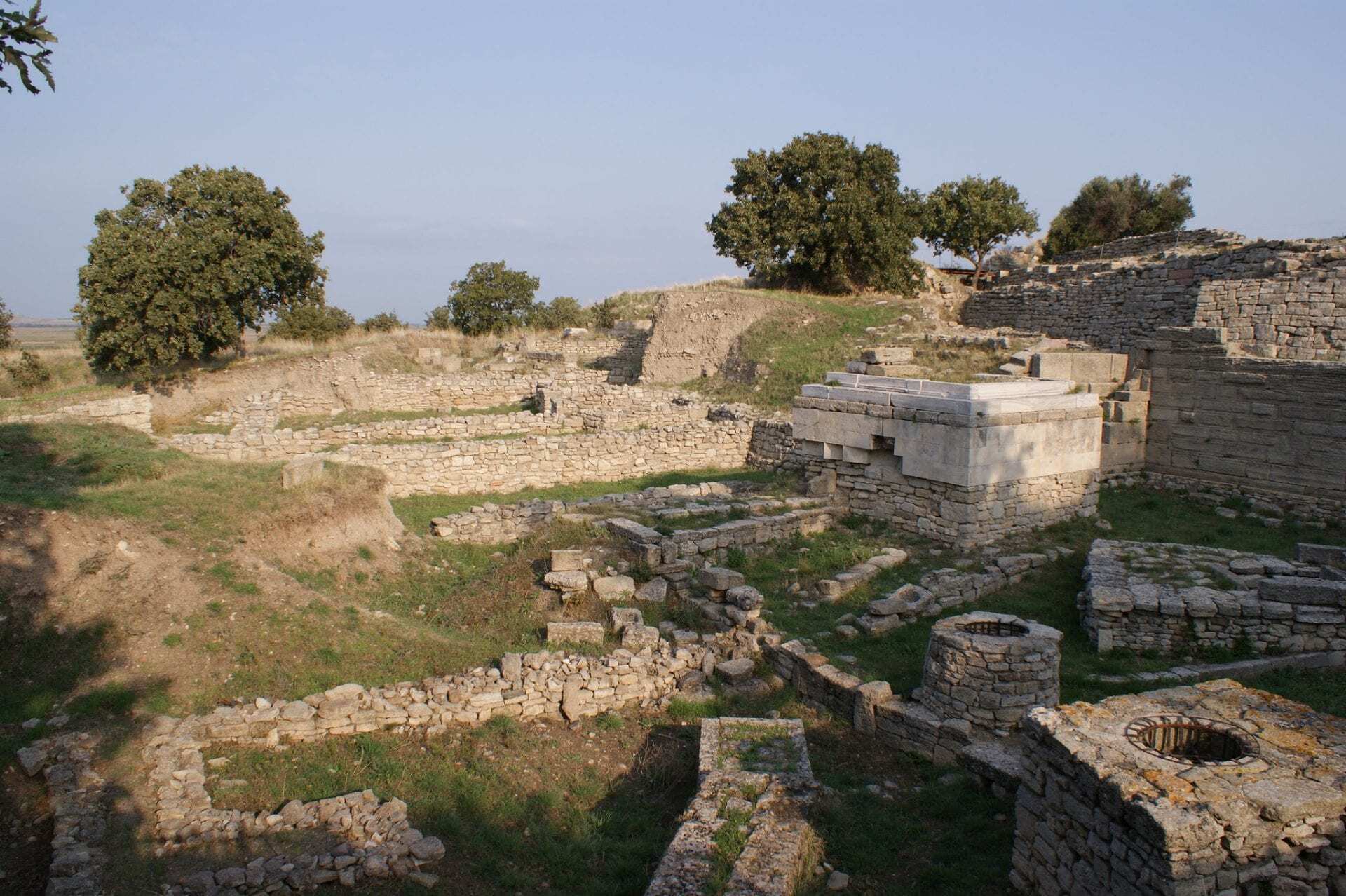The ruins of Troy (also called Ilios or Ilion and Ilium) in present-day Hisarlik in Canakkale, Turkey – comprises of a multi-period site now partially buried in an artificial tell illustrating the gradual development of the city in north-western Asia Minor.
The city was positioned in a strategic point at the southern entrance to the Dardanelles, a narrow strait and trading route that links the Black Sea with the Aegean through the Sea of Marmara.
Troy was the setting for Homer’s Iliad (one of the oldest extant works of Western literature) that tells the story of the city being sieged by a coalition of Greek states.
According to legend, Paris, the Trojan son of King Priam was invited to judge over a contest “for the most beautiful” of the Greek goddesses Aphrodite, Hera, and Athena. Aphrodite promised Paris the love of the most beautiful woman in the world, resulting in Helen, wife of the Spartan King Menelaus eloping with Paris to Troy.

The Greeks launched a campaign against Troy under the command of Agamemnon, King of Árgos or Mycenae, whose ranks included the famous Greek champion Achilles (in which the Iliad recites the quarrels between both men set in the 10th year of the siege).
The siege was finally broken when the Greeks infiltrated Troy by hiding in a wooden horse which the Trojans brought within the city walls as an offering to Athena. As the Trojans slept, the Greeks opened the city gates allowing the attacking army to sack the city.
The development of the city layers is detailed in 9 distinct phases, with the earliest period of occupation dating from the 3rd millennium BC in the Bronze Age. Troy I was a mercantile city, with a small citadel and around 20 rectangular dwellings encircled by a city wall and towers.

Troy II was almost double in size and comprised of a lower town, an upper citadel, and a megaron-style palace. Troy II was destroyed in a fire, with the subsequent phases for Troy III, IV, and V showing a continued emphasis on defence by the construction of more elaborate circuit walls.
Troy VI and VII may be assigned to the Middle and Late Bronze Age, with Troy VI being destroyed in an earthquake. The city was reconstructed in Troy VII with a heavily fortified citadel, and tightly packed housing laid out on ascending, concentric terraces for between 5,000 to 10,000 inhabitants (a significant Bronze Age city at the time). Troy VII was destroyed by fire, with archaeologists finding human remains in some of the dwellings, suggesting the city was captured and sacked.
Troy VIII saw the settlement of Greeks around 700 BC, until the Roman’s sacked the city around 85 BC establishing Roman dominion over Troy IX.

Troy IX saw the construction of various public buildings, with further financed development by Emperor Augustus who rebuilt the sanctuary of Athena Ilias, the bouleuterion (council house), and the theatre.
Troy’s fortunes began to decline during the Byzantine era, most probably due to the silting of the city’s harbour cutting off the essential maritime trade that the city was dependant on, with its eventual abandonment during the 14th century AD.
Header Image Credit : Hugh Llewelyn – CC BY-SA 2.0





